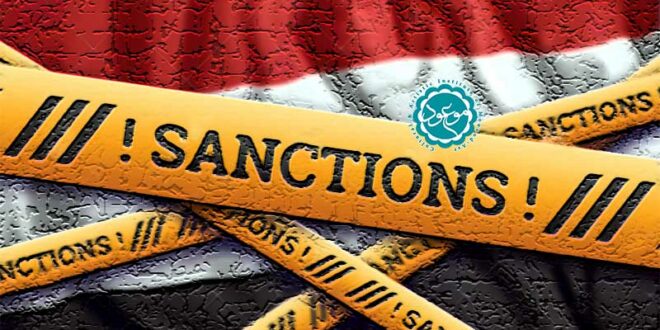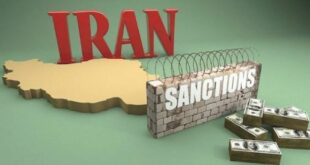The Art of Sanctions – Iraq: the international community imposed sanctions regimes against Iraq in the 1990s and against Iran in the 2000s that could not be more different in structure, legal basis, and direct consequences. In fact, while the sanctions against Iran have been praised as being exceptionally targeted and effective (at least in some quarters), most descriptions of the sanctions against Iraq would characterize them as the unenlightened forebear of Iran sanctions, serving as an object lesson of “how not to do it” for future sanctioners to study.
Mauood’s Introduction: The author of the present book (The Art of Sanctions) is Richard Nephew. Richard Nephew was in charge of the sanctions team against Iran during Obama’s second term. He supported the nuclear negotiators in the matter of sanctions in Vienna. Richard Nephew has previously served for ten years as an Iran member of the National Security Council at the White House and as Deputy Secretary of State for Coordination of Sanctions at the State Department. The book is also translated into Persian by the Iranian Parliamentary Research Center (IPRC).
Note: The content of this book is not approved by us and is published solely to familiarize policymakers with the views, approaches, and methods of the designers of sanctions against Iran.
Iraq’s Invasion of Kuwait and Own Invasion in Turn
On August 2, 1990, Iraqi tanks stormed across their southern border into Kuwait. The Iraqi invasion took place following months of increased tensions between the two countries over oil-field drilling and extraction, Iraqi financial problems created by the Iran-Iraq War (1980–1988), and poor signaling by the Iraqis, other [Persian] Gulf Arab states, the United States, and the rest of the international community about the possibility of an invasion and how it would be treated.1 Saddam Hussein, in particular, seemed to believe that the rest of the world would accept an invasion of Kuwait, and, even if they did not, he believed he had the military capability to prevent significant retaliation.
Iraq’s invasion was a flagrant violation of the UN Charter and moreover a rejection of the very principles upon which the United Nations was founded: respect for national sovereignty and the peaceful resolution of disputes.
Hussein’s actions set a context for international response that was highly persuasive on its face. Every state around the world has borders. Many states have borders that are unresolved, and some even have borders with states that possess military forces that are quantum leaps above their own domestic capabilities. The invasion of Iraq was not just therefore an affront to the international order; it presaged a potential security calamity for the rest of the Middle East and those around the world who feared what their own local bullies might do next.
The timing of Iraq’s invasion was also notable, coming as the Cold War was itself ending and as leaders around the world were looking for a new paradigm for managing international security and stability.
The UN Security Council (UNSC) responded to the invasion by slapping sanctions on Iraq within four days. UNSC resolution (UNSCR) 661 imposed, among other things, an arms embargo against Iraq, and it warned of future measures. UNSCR 661 was itself both an expression of commitment by the international community against Iraqi occupation and a set of consequences.
It was swiftly supplemented during the following five months by other sanctions resolutions, six in all, forming in aggregate a comprehensive sanctions regime against Iraq. Ultimately, these sanctions did not convince Saddam Hussein to withdraw from Kuwait. Instead, an international coalition led by the United States initiated a military operation in January 1991 to expel Iraq. But sanctions remained in place even after the conclusion of active hostilities as a way of managing Saddam’s militant impulses and providing reassurance to his neighbors. From 1990 forward, sanctions interrupted normal trade and business until after the U.S.-led “coalition of the willing” invasion of Iraq in 2003.
Key elements of the sanctions regime included prohibitions on
- the import of all products and commodities originating in Iraq;
- any activities by UN member nations in Iraq that would promote the export of products originating in Iraq;
- the availability of funds or other financial or economic resources to Iraq, or to any commercial, industrial, or public utility operating within it, except for medical or humanitarian purposes; and
- the sale of weapons or other military equipment, as well as other goods, to Iraq.
A consequence of this severe sanctions regime was the near-complete collapse of all forms of trade with Iraq, made worse by Iraq’s inability (or, given Saddam Hussein’s predilection for palace building, refusal) to ensure the availability of hard currency for humanitarian goods. The international community attempted to lessen the humanitarian impact of sanctions against Iraq during this period. For example, in 1995, the UNSC authorized the sale of limited amounts of Iraqi oil in order to provide an economic lifeline for the Iraqi population.
The “Oil for Food” program, as it was subsequently dubbed, was found to be riddled with corruption, but it had a positive impact on the supply of humanitarian goods to the Iraqi population. This aside, the sanctions regime against Iraq was intense, robust, and effective in that Iraq was denied any possibility of being able to rearm itself, whether by conventional or unconventional means. In this fashion, a key aim of the sanctions regime was achieved.
However, there was no common understanding of what would be required in order to achieve complete satisfaction of the international community’s concerns with Iraq. Certainly, the text of UNSCR 687 (1991) outlined what Iraq must do, particularly with respect to its obligations to disclose and dismantle any programs for producing weapons of mass destruction and ballistic missiles.
Other steps included accepting the international boundary between Iraq and Kuwait as it was prior to the invasion of Kuwait, permitting inspection of any sites in Iraq associated with weapons of mass destruction (WMD) programs and missiles, repayment of Iraqi sovereign debts, Iraqi renouncement of terrorism, and Iraqi acceptance of international humanitarian missions, such as that of the Red Cross, into its territory.
But when Iraq failed to cooperate fully and transparently in addressing lingering concerns with its WMD programs, the United States, United Kingdom, and other states understood Iraq’s refusal to be both a violation of Iraq’s UNSC obligations as well as confirmation that the Iraqis intended to pursue weapons of mass destruction.
This misconception proved disastrous, in that it led directly to the invasion of Iraq by the United States and its partners in the “coalition of the willing” in March 2003, even though—as we learned afterwards—Iraq had no WMD or easy means to reconstitute WMD programs. The invasion itself marked the effective end of the use of sanctions as a point of leverage over Iraq. But what is of particular interest is the logic behind Saddam Hussein’s provocation of US and UK moves to war prior to 2002. Hussein certainly had it within his power to cooperate with international demands to provide access to any facility in the country.
On the other hand, Hussein felt that Iraqi national sovereignty and his dignity as its executive were undermined by capitulation to Western demands. That Hussein was a megalomaniac who mur-dered thousands of his people does not diminish his own sense of self, his nationalism, and the impact that these factors had on his decision making.
In fact, Saddam Hussein’s control over the country may have made things worse from the standpoint of resolving the situation without the United States and its partners resorting to violence.
In other countries, democratic pressure or the interests of other groups might have influenced the leader’s decision making to ensure he accepted an accommodation that removed the need for—and credibility of—an invasion. In fact, one could look at Iraq’s readiness to accept a renewed inspection effort in 2002 as precisely this kind of dynamic.
However, the United States maintained at the end of 2002 and 2003 that Iraq’s declarations to international inspectors contained gaps, particularly about its efforts to develop WMD in the past, that amounted to material violations of its continuing disarmament and nonproliferation obligations. The UN’s chief inspector, Hans Blix, noted in his statement to the UNSC on March 7, 2003, the conundrum facing the international community:
It is obvious that while the numerous initiatives which are now taken by the Iraqi side with a view to resolving some longstanding, open disarmament issues can be seen as active or even proactive, these initiatives three to four months into the new resolution cannot be said to constitute immediate cooperation. Nor do they necessarily cover all areas of relevance. They are, nevertheless, welcome. And UNMOVIC [UN Monitoring, Verification and Inspection Commission] is responding to them in the hope of solving presently unresolved disarmament issues.2
In other words, Iraq had not met its obligation to provide the level of cooperation sought by the United States and its partners, even though it did provide far more cooperation and access than before Blix’s renewed mission in 2002. The United States and its partners did not accept such a mixed grade as indicative of a more positive interpretation of Hussein’s behavior and intention.
ather, the point of emphasis for the United States was on the absence of immediate, comprehensive cooperation, which suggested a desire to evade international scrutiny in order to protect illicit weapons programs. But the more interesting revelation from this story is that Hussein had every opportunity to go farther in his country’s admissions if he wanted to.
He had no illicit weapons program to be discovered. Had he accepted the transparency and monitoring demanded of him, he might have disarmed the United States and its partners, preserving his regime. But he chose not to, notwithstanding the potential consequences. Why?
Many have written on this subject, positing a range of explanations. The CIA’s report on Iraq’s WMD program after the 2003 invasion cites four main reasons:
- the desire to avoid looking weak, especially with respect to regional adversaries like Iran and Israel
- the desire to preserve an image of a great and powerful Iraq on the international stage
- Hussein’s fear of his subordinates building a coalition and rising against him; and
- the perception of Iraq’s nuclear program as a logical result of technological advancement and an opportunity to highlight Iraq’s technological capabilities.3
Put a different way, as perverse as it may appear, Hussein’s ordering of Iraqi national interests put the imminent loss of territorial integrity through Western invasion below his desire to avoid being perceived as weak at home or abroad. He was prepared to court the possibility of invasion, notwithstanding all indications of readiness to act on the part of the United States and its partners, because either he doubted the resolve of the coalition or feared the consequences of cooperation. This was something that U.S. policymakers fully understood only after the invasion.
Drawing Lessons for Sanctions
Altogether, the Iraq case has interesting implications for our study of sanctions pressure. Implicitly, this means that though a combination of sanctions and potential military pressure were powerful insofar as their consequences for the Iraqi population, its future WMD programs, and its conventional military strength were concerned, Hussein did not believe these pressures were sufficient to force his full cooperation with international inspectors.
Beyond suggesting that sanctions pressure might have had little continued value in seeking this kind of cooperation from Iraq (buttressing the U.S. administration’s argument at the time that continued sanctions would not solve the underlying problem), this assessment also supports a different contention:
that no matter how forcefully sanctions had been used against Iraq, they had a maximum value insofar as diminishing Iraqi resolve is concerned. The Iraqis—or, at least, Saddam Hussein—established an incredibly high bar for what would be required for him to feel compelled to cooperate fully and transparently with UN WMD inspectors. No matter how much sanctions pressure could be mounted, it would not shift his mindset.
This episode also underscores an important point about the study of sanctions, or rather a study of how to make them work properly: how difficult it is to assess in advance the degree to which pain will be tolerated, what types of pain are most meaningful for individual targets, and the resolve of a regime.
The Iraqi economy had collapsed for all intents and purposes in the 1990s (though, as O’Sullivan notes, it was in poor shape prior to the invasion of Kuwait following the eight-year-long Iran-Iraq War and in much worse condition after U.S. airstrikes during the First Gulf War).4 Some economic activity remained, and people had jobs, sources of income, and ways to spend what they earned.
But the downturn for Iraq after the beginning of sanctions was stark, as sanctions reduced Iraq’s economic capacity and ability to rebuild after the two wars:
- Real earnings fell by 90 percent during the first year, and then by 40 percent between 1991 and 1996.
- Industrial production decreased by 80 percent.
- By 1996, public sector workers commonly earned $3 to $5 per month compared to their pre-sanctions salaries of $150 to $200 per month.5
Saddam Hussein proved remarkably resistant to the pressure of these sanctions. Certainly, he himself was not suffering. He could not exert himself internationally, but he built nine luxurious palaces worth $2 billion during the 1990s.6 Moreover, he resisted opportunities to address his people’s concerns, even short of offering the kind of full cooperation with the United Nations that might have led to sanctions being eased or terminated.
For example, the United Nations established the legal underpinnings of the “Oil for Food” program in 1991, but Hussein declined opportunities to activate the program until 1996, when the international community essentially foisted it upon him.7 Even though now the program is much maligned because of the corruption that it enabled in Iraq and at the United Nations, the program itself had a simple, humanitarian justification that Hussein spurned for years. And, of course, he engaged in countless atrocities at home that demonstrated his lack of interest in the well-being of his population.
Hussein’s defiance suggested to U.S. and international observers that he was extremely dedicated to preserving his WMD ambitions. His ability to evade to a significant degree the sanctions imposed on him suggested that sanctions were ineffective in managing Iraq as a whole. But perhaps instead he was simply committed to keeping everyone in the international community guessing, as well as holding firm on his protection of Iraqi national rights.
This speaks to an important and complicated dimension for measuring resolve: the level of significance to give to particular points of evidence and what each individual piece means for a country’s defense of the particular interests in question. Though at the time Hussein was suspected of being resolute in defense of Iraq’s nascent WMD capabilities, it appears now that Hussein was instead resolute in defense of Iraqi sovereignty while not possess-ing any significant WMD capabilities.
This is meaningful not only for future scenarios of nonproliferation and arms control failures but also for evaluation of how a country reacts to pressure. Having been successful in preventing Iraqi rearmament and in dismantling Iraq’s WMD infrastructure, sanctions achieved their purpose and outlived their usefulness. But failure to understand that success had been achieved with respect to the narrow set of issues that prompted the imposition of sanctions—and to grasp that the remaining issues were beyond the reach of sanctions—led to perceptions in the United States and beyond that the sanctions regime itself had failed.
In the end, it was not sanctions that failed, but rather the failure of Iraqi, U.S., and other U.S. partners’ policymakers to understand properly the considerable stakes of resolve, credibility, and pres-tige that were in conflict. The initial problem had been solved, but the solution was not recognized.
From our perspective, several deficiencies can be seen in the handling of Iraq through this period. First and foremost, there were confused objectives for the imposition of pain. But worse, there was ambiguity about whether those objectives had been met because some parties—the United States and the United Kingdom, in particular—held a higher bar than others for Iraqi performance.
This confusion contributed to sanctions fatigue. It also meant that, when the United States and the United Kingdom presented a case to the international community about the need for war, the support for action simply was not there. Second, there was little understanding about the commitment of Saddam Hussein to his rejectionist course, even as there was significant understanding of Iraq’s economy and its vulnerabilities.
This, in the end, only served to strengthen the conviction among those in the United States and elsewhere that Iraq was pursuing nuclear and other weapons of mass destruction, for only in this cause would such deprivation be justified. In this, policymakers and intelligence analysts implicitly applied their own sense of standards for sanctioned-state resolve and thereby misdiagnosed both the problems in Iraq and the solutions. Third, because the sanctions had been maximized within the first six months, there was no opportunity for an incremental and efficient increase in pain over a longer span of time.
Rather, the maximum allotment of sanctions pain was assigned in 1991, meaning that there was no further ratcheting up available and therefore little means of signaling a sanctioning state’s willingness to go farther. The absence of further steps to take in the realm of sanctions may have contributed to a sense of fatalism in Iraq that was ultimately counterproductive. And last, there was no recourse for resolution of the problems surrounding Iraqi compliance with its UNSC obligations other than military action.
This lack of resolution is not, itself, a failure of the sanctions regime but rather of the underlying policy, which did not provide for serious consideration of the possibility of success in the comprehensive embargo and—consequently—did not budget for off-ramps short of complete Iraqi capitulation.
Arguably, even with complete capitulation, the United States and its partners might still have made a case that Iraq’s longstanding perfidy and Saddam Hussein’s own personal crimes undermined the value of any concessions Iraq might make.
Either consciously or not, these were all mistakes that the United States sought to avoid when imposing sanctions on Iran.
Footnotes:
1. Mehran Kamrava, The Modern Middle East: A Political History Since the First World War (Berkeley: University of California Press, 2005), 185–86.
2. “Transcript of Blix’s UN Presentation,” CNN, March 7, 2003, http://www.cnn.com/2003/US/03/07/sprj.irq.un.transcript.blix/.
3. Central Intelligence Agency, “Comprehensive Report of the Special Advisor to the DCI on Iraq’s WMD, Chapter on Regime Strategic Intent,” September 30, 2004, https://www.cia.gov/library/reports/general-reports-1/iraq_wmd_2004/chap1.html#sect6.
4. Meghan L. O’Sullivan, Shrewd Sanctions: State Sponsors of Terrorism (Washington, DC: Brookings Institution Press, 2003), 123–125.
5. Peter Boone, Haris Gazdar, and Athar Hussein, “Sanctions Against Iraq: Costs of Failure,” Report for them Center for Economic and Social Rights, November 1997, http://www.cesr.org/downloads/Sanctions%20Against%20Iraq%20Costs%20of%20Failure%201997.pdf.
6. Transcript of Hearing before the Permanent Subcommittee on Investigations of the Committee on Governmental Affairs of the U.S. Senate, “How Saddam Hussein Abused the United Nations Oil-For-Food Program,” November 15, 2004, http://www.gpo.gov/fdsys/pkg/CHRG-108shrg97048/pdf/CHRG-108shrg97048.pdf.
7. United Nations, “Oil For Food,” http://www.un.org/Depts/oip/background/, accessed January 10, 2016.
 Mouood Mouood English Edition
Mouood Mouood English Edition




